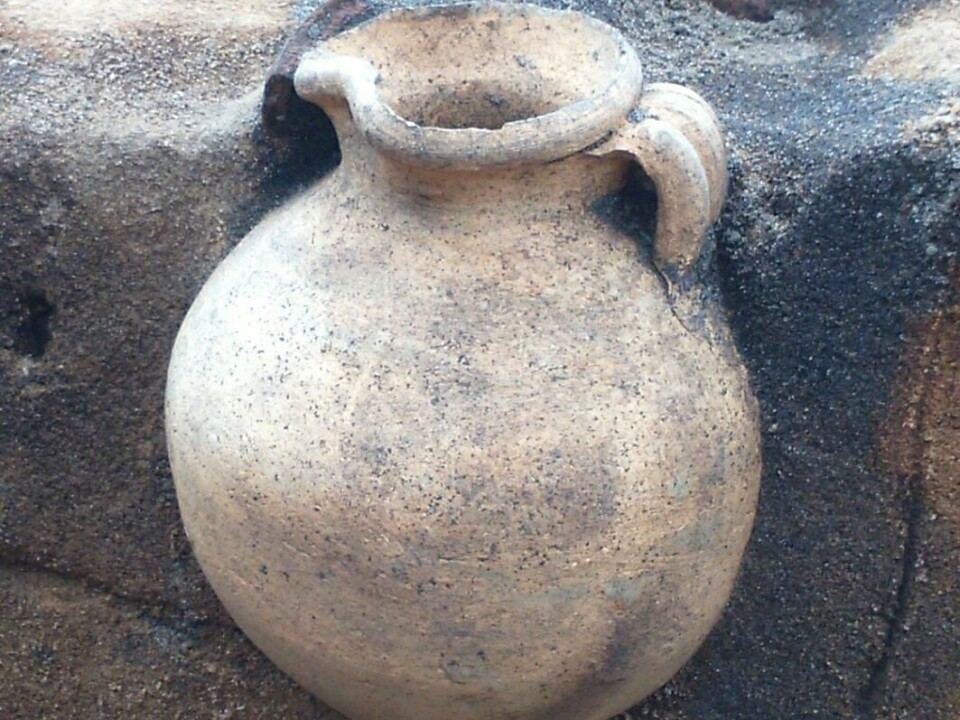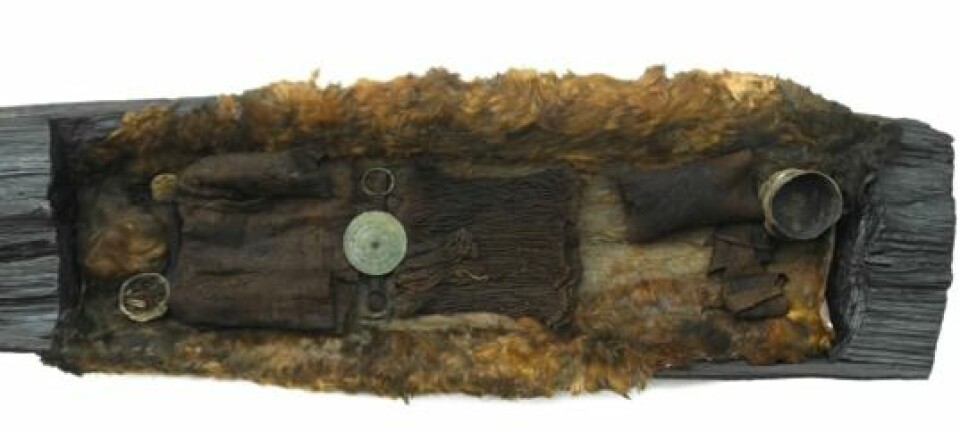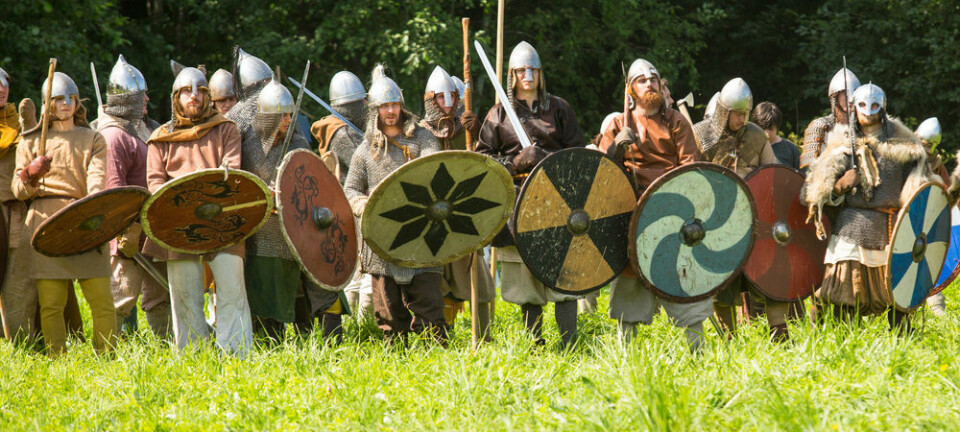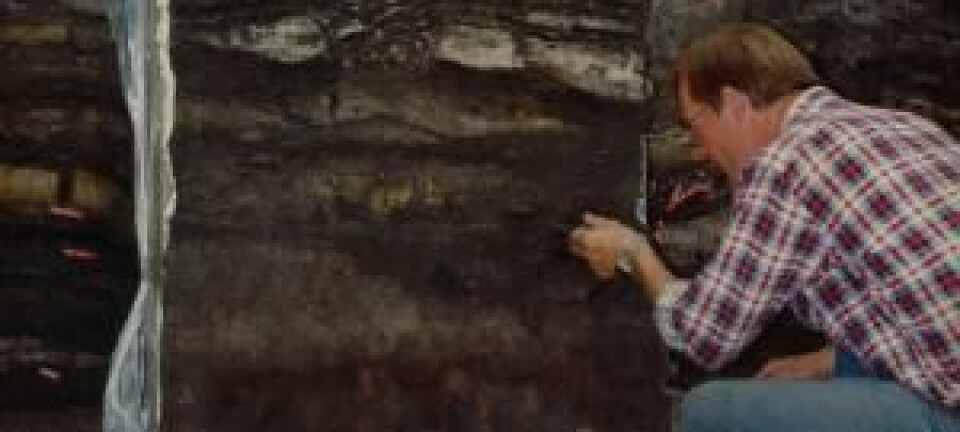
Ancient urn hints at global trade network
Archaeologists "couldn't believe their eyes" when a perfectly preserved urn turned up in a grave in Southern Jutland.
"We were absolutely astounded when we saw it. We thought: ‘That can't be right’," says archaeologist Søren Sindbæk, a professor at Aarhus University who recently led an excavation in the Danish city of Ribe.
It turned out that the small jug was imported from France or Belgium just as Ribe began to morph into a real town with a larger population. It was used as an urn, probably by a stranger from the Frankish realm.
"We've been doing excavations in Ribe for many years, so it’s rare indeed to come across something that simply doesn't fit in with the things we have previously found. Had we already had a lot of shards from that kind of jug we could have said 'hurrah, now we've found a whole one' -- what's fantastic is that it turned up completely without precedent," says Sindbæk.
Ribe started with a bang
Archaeologists have never previously found pottery imported from France or Belgium in that time period in this region. We are talking early 8th century, when Ribe's market square was still in its infancy.

According to Sindbæk, many people have had difficulty imagining the market square in Ribe as something other than a local enterprise, which turned into a global site of commerce later on. The little jug changes this.
"For many years, the idea that Ribe had gradual beginnings was archaeology's favourite model of interpretation. This find belongs to a very early phase of the town's history, and it’s obvious that there has been connections all the way down to the central regions of the Frankish realm. This suggests that Ribe started with a bang and not a whisper," says Sindbæk.
"None of us could believe our own eyes"
The urn was found when archaeology student Victor Palsted Bizoev was given the job of examining some shards in the soil surface. The shards turned out to stem from a larger urn lying top down. The urn may have been placed like that to protect the small jug beneath it.
Against all odds, the little wine jug of light-coloured earthenware was completely intact, exactly as when it was put in the ground more than 1,000 years ago.

"We immediate saw that what had turned up wasn't anything like what we usually find. Danish pottery is invariably blackish-brown or red, so the light-coloured earthenware immediately told us that it wasn't local. When it had been completely unearthed it was obvious to us that it had to be an ancient find, but none of us had any idea what we had before us," says Sindbæk.
"None of us could believe our own eyes," he says.
After consulting colleagues from far and wide, the archaeologists were able to ascertain that they had a jug made during the Merovingian dynasty (circa 450 to 750 AD) in Belgium or France.
"The suggestions came pouring in, but within a few hours we found out that there were distinct parallels with France," says Sindbæk.
Vast trading network made Ribe special
According to Sindbæk, the jug tells a story of the extensive trading network which made Ribe special in the early 8th century -- just before the advent of the Viking age.
"The jug originates from a point in time when Northern Europe, especially in terms of trade and political power play, is undergoing fundamental change, and the Frankish realm was expanding very actively," he says.
"At this time, the Mediterranean had become a much less attractive community culturally and economically after the extremely destructive wars with the rest of the Byzantine empire and highly successful Islamic armies. I think the find is evidence of the fact that the Frankish realm was exploring the possibilities towards the north.”
"The jug belongs to a point in time when the historic sources begin to hear about trade in the North Sea area and when Western Europe's cultural and economic axis was beginning to turn from south to north."
Could the owner have been local?
Not everyone, however, is convinced that the owner of the urn was of foreign descent.
The archaeologist Claus Feveile has been involved in all the digs in Ribe since the mid-1980s and until 2011 and has a unique overview of what has been found in the town. He now work for the Sites and Monuments section at the Danish Ministry for Culture.
"This isn't the first time imported earthenware has been found in Ribe -- we're used to that on the market square. But we only ever find shards and so it can be difficult to see what the reason is for it to be there. Was it important for resale or was it the foreign merchant who brought along his own gear?" says Feveile.
"Of course it could be a foreigner who has been buried, but I'm most inclined to believe it was a local person. You can easily find an object which is Friesian, but which was used locally. But more detailed examination of the bones will be able to determine that," he says.
But there's no denying the jug is a beautiful find, says Feivile.
"It’s absolutely fantastic to find an entire imported jug from that period in Denmark. You have to be a lucky jug to do that," he says.
------------
Read the Danish version of this article on Videnskab.dk
Translated by: Hugh Matthews








